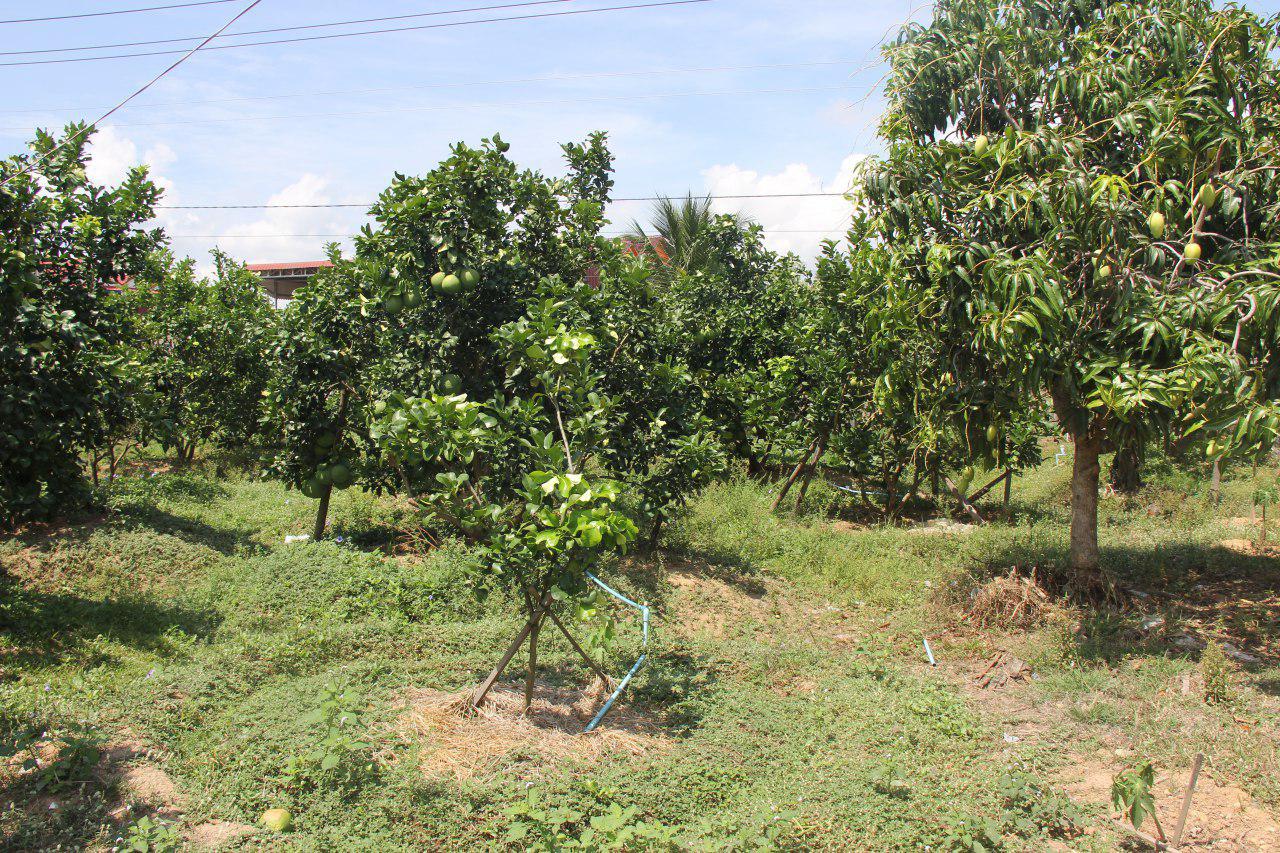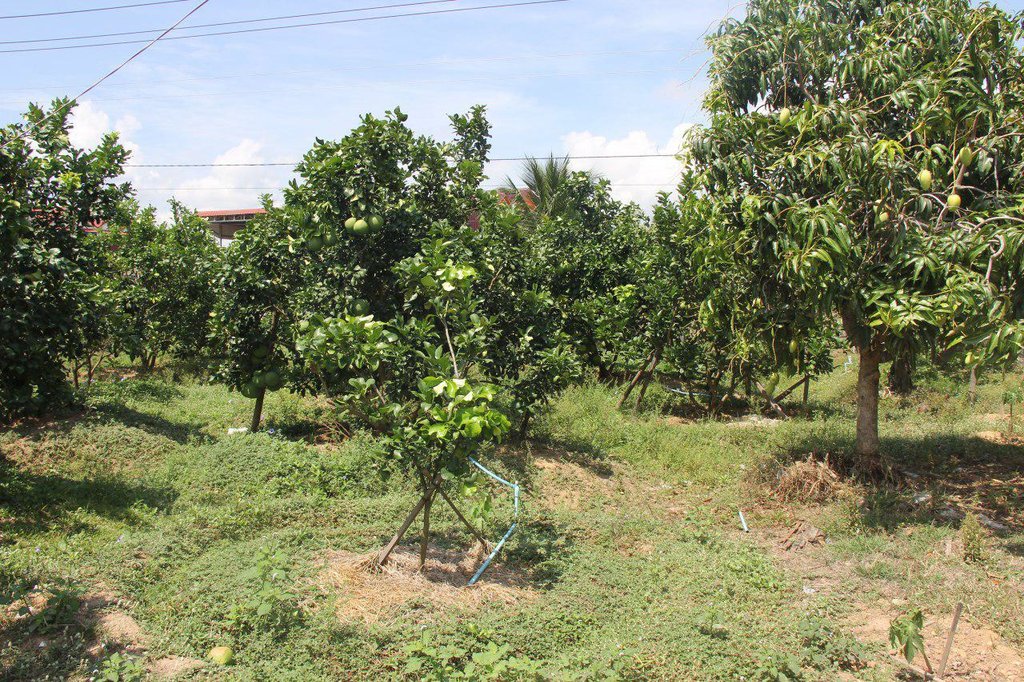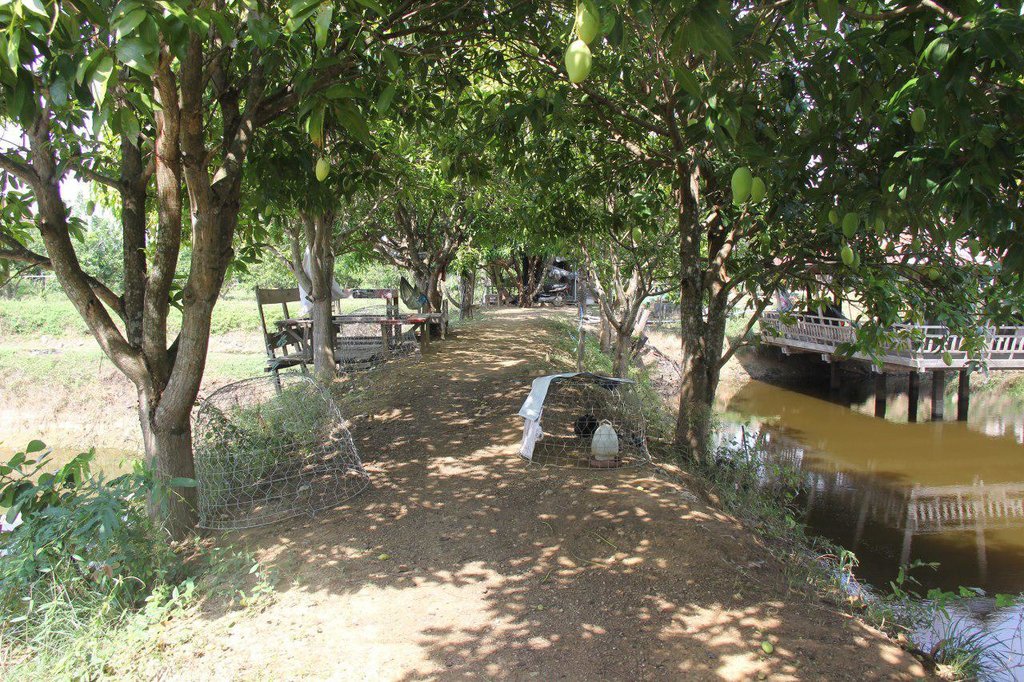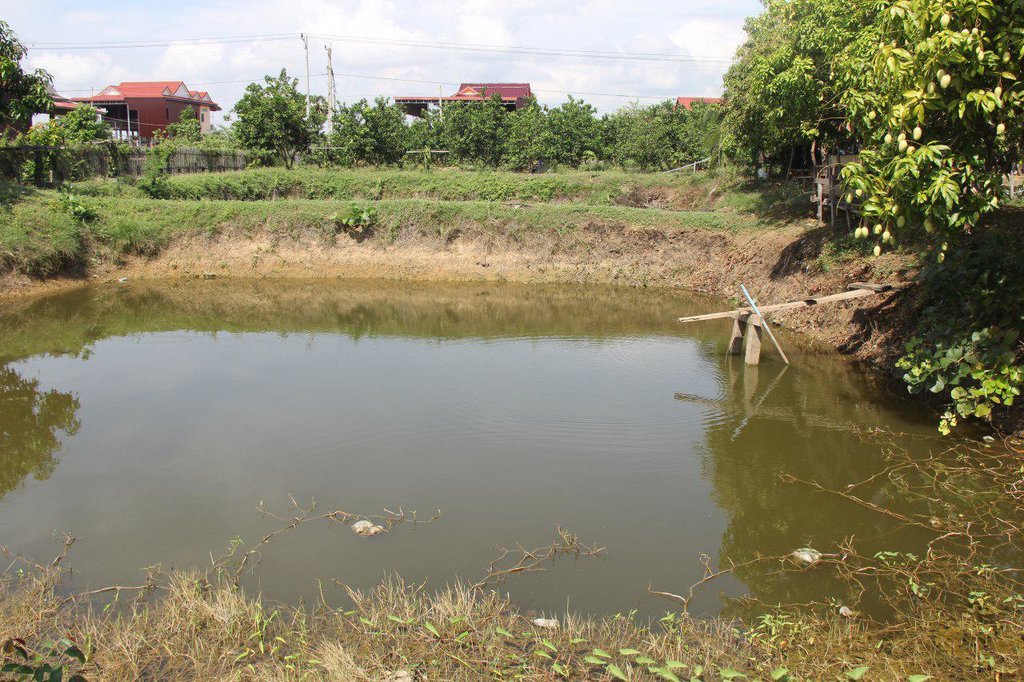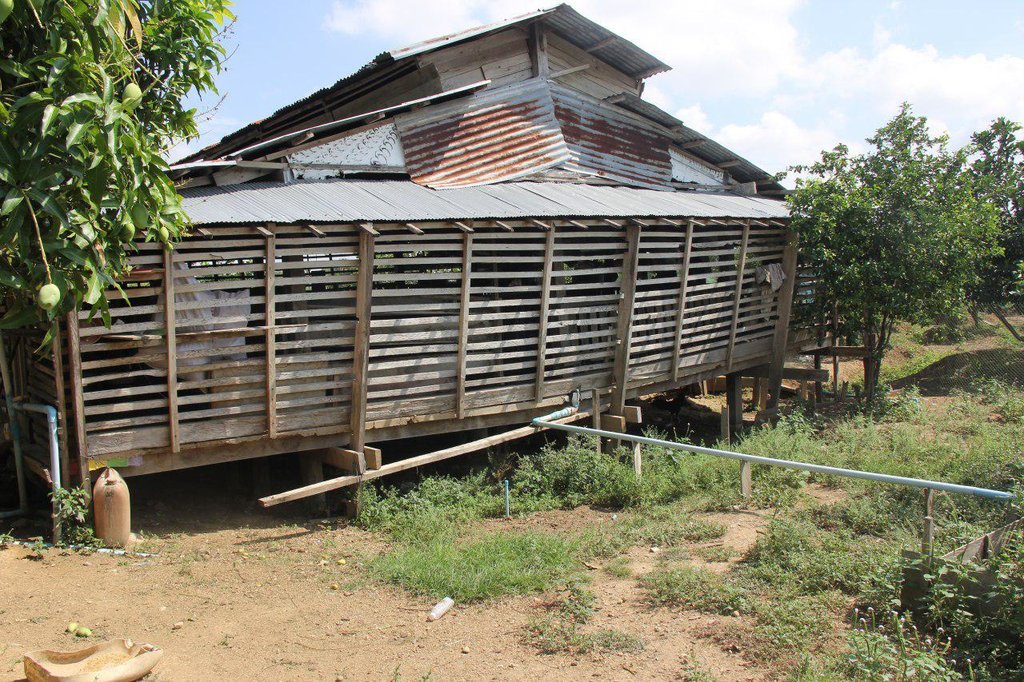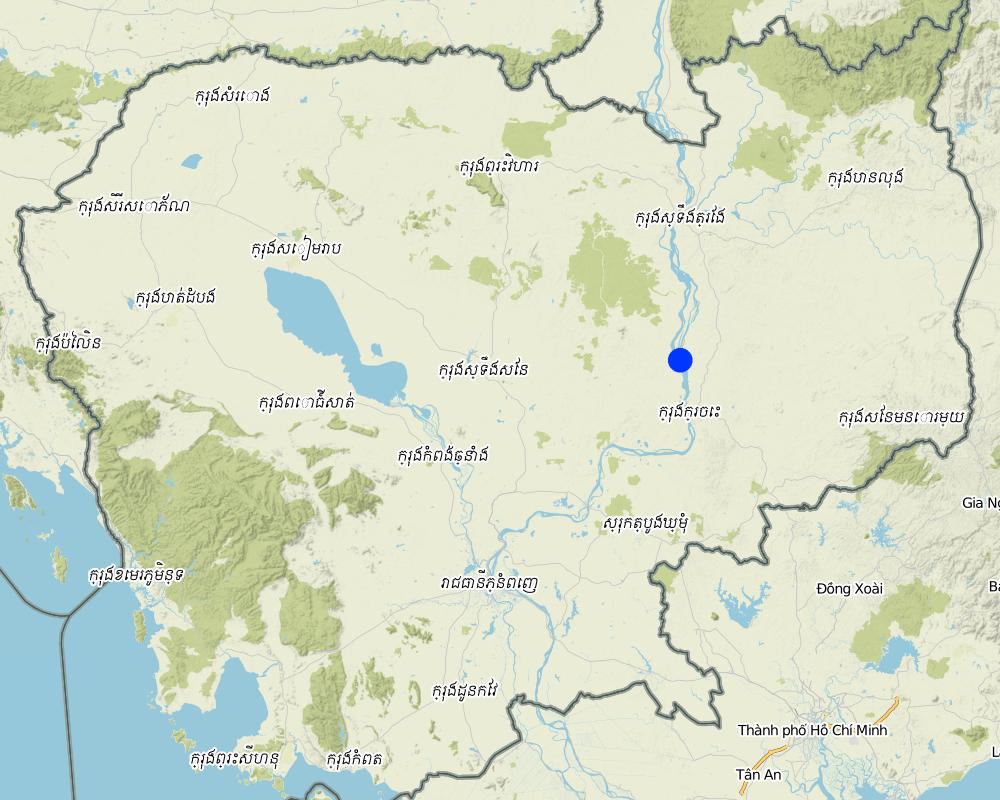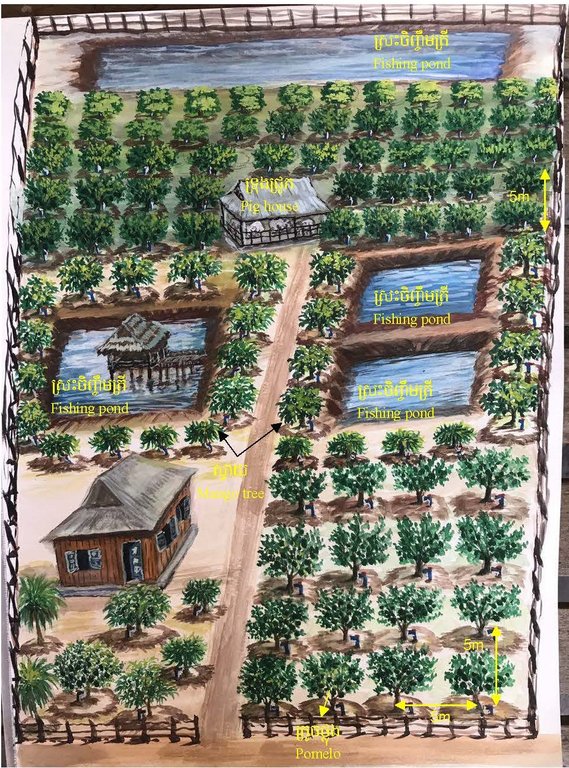Improved orchard with an integrated farming system [Cambodia]
- Creation:
- Update:
- Compiler: Sok Pheak
- Editors: Navin Chea, Sophea Tim
- Reviewers: Nimul CHUN, Nicole Harari, Stephanie Jaquet, Ursula Gaemperli
Oun Chamkar Kroch
technologies_2263 - Cambodia
View sections
Expand all Collapse all1. General information
1.2 Contact details of resource persons and institutions involved in the assessment and documentation of the Technology
Key resource person(s)
land user:
Keat Chetana
(+855) 978810707
N/A
Land User
Kaeng Prasat village, Sambour commune, Sambour district, Kratie province
Cambodia
Chief of District Office of Agriculture, Forestry and Fisheries of Sambour:
Acting Chief of District Office of Agriculture, Forestry and Fisheries of Prek Prasab:
Official of District Office of Agriculture, Forestry and Fisheries of Chetr Borei:
Ly Saravuth
(+855) 89 796 786
saravuthly123@gmail.com
District Office of Agriculture, Forestry and Fisheries of Chetr Borei.
Khsar village, Dar commune, Chetr Borei district, Kratie province.
Cambodia
Name of project which facilitated the documentation/ evaluation of the Technology (if relevant)
Scaling-up SLM practices by smallholder farmers (IFAD)Name of the institution(s) which facilitated the documentation/ evaluation of the Technology (if relevant)
Royal University of Agriculture (RUA) - Cambodia1.3 Conditions regarding the use of data documented through WOCAT
When were the data compiled (in the field)?
07/04/2017
The compiler and key resource person(s) accept the conditions regarding the use of data documented through WOCAT:
Yes
1.4 Declaration on sustainability of the described Technology
Is the Technology described here problematic with regard to land degradation, so that it cannot be declared a sustainable land management technology?
No
Comments:
This practice mainly focus on the use of natural manure, including pig, cow and chicken manure as organic fertilizers and drip irrigation system to reduce water consumption on the crops.
2. Description of the SLM Technology
2.1 Short description of the Technology
Definition of the Technology:
The integrated farming system (IFS) includes basically the mixture of different farming components like crops, fruit tree cultivation, fish and livestock husbandry on the same farm plot. IFS help significantly to improve soil quality and crop production by using a minimum of external agricultural inputs.
2.2 Detailed description of the Technology
Description:
Growing fruit trees is commonly practiced by Cambodian farmers, and there are different types of crops throughout the country. An integrated farming system is first of all an agricultural practice on a particular plot of land where crops, as well as livestock (pigs, and chickens), and fish are raised. The main purpose is to support and meet the farmers’ need in getting more benefits and at the same time to promote ecological balance in the region. The integration of all, crop production, fish and livestock, is a simple mixture that has been applied by most farmers. The case study here picks out one particular farmer who applied this technology on his orchard, in an area of less fertile soil. This soil bear normally lower yields e.g. also in fruit tree cultivation. The farmer grew four types of fruit trees within his orchard, which included 150 pomelo trees, 25 mango trees, 11 tamarind trees and 10 lemon trees. Furthermore he raised fish and livestock on his plot, both with the aim of improving the soil condition to get better yield and crop quality. The mixture of different farming components and the resources recycling within the orchard reduced the use of external agricultural inputs and led him to nearly closed material cycle on his farm. By this, he supports to a more balanced ecosystem in the farm surroundings. At the same time he became more resilient to climate change impacts. However it took the farmer several years to rehabilitate the soil conditions by applying this kind of integrated farming system.
On the 8,400 square meter plot, the farmer has established four ponds for irrigation and fish farming. The space between the pomelo and the lemon trees were 5 m. The mango and tamarind trees were grown along the ponds and the fence with a space of five meter shaped in square. The main product was pomelo; besides this, the farmer has also raised 11 pigs and 100 chickens placed in separate cages to avoid outbreaks of disease. In order to promote the growth of his fruit trees, he applied manure from his pigs, cow dung and chickens. The ground around the trees was covered by rice straw to improve the soil moisture. In addition he had installed drip irrigation pipes to minimize the workload and to save water. For this kind of integrated farming system it is necessary to divide up the plots for the purpose of growing crops, livestock and fish farming; and these areas should interact within the farm.
The farmer gains a large number of benefits from the integrated farming in terms of household consumption and income. It also helps to regulate the natural environment by providing windstorm protection. Another purpose is not to use chemical fertilizer by using manure from livestock. And finally, Pomelo represents an important income source for the farmers and it has a strong market demand. It can be harvested twice a year; From the fourth year of cultivation the yield of one pomelo tree is about 70 to 200 fruits depending on its size ; per fruit the farmer gets about 6000 Riel (2017). The challenge of this technology is the considerable amount of time and money to for establish the technology. Anyway, the farmer expressed difficulties in raising capital to invest into the technology.
2.3 Photos of the Technology
2.5 Country/ region/ locations where the Technology has been applied and which are covered by this assessment
Country:
Cambodia
Region/ State/ Province:
Kaeng Prasat village, Sambour Commune, Sambour District, Kratie Province
Further specification of location:
Rural area
Map
×2.6 Date of implementation
Indicate year of implementation:
1998
2.7 Introduction of the Technology
Specify how the Technology was introduced:
- through land users' innovation
- during experiments/ research
Comments (type of project, etc.):
The farmer has practiced this technology based on his own experience and innovation. He was used to fail due to the high flood in 2014 when the orchard remained only around 20%.
3. Classification of the SLM Technology
3.1 Main purpose(s) of the Technology
- improve production
- reduce, prevent, restore land degradation
- create beneficial economic impact
3.2 Current land use type(s) where the Technology is applied
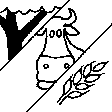
Mixed (crops/ grazing/ trees), incl. agroforestry
- Agroforestry
Main products/ services:
Pig and chicken, fish, pomelo, mango, sweet tamarind and lemons on same agricultural plot (Integrated Farming System)
If land use has changed due to the implementation of the Technology, indicate land use before implementation of the Technology:
Before, forest land was kept for a long time on this plot.
3.3 Further information about land use
Water supply for the land on which the Technology is applied:
- mixed rainfed-irrigated
Comments:
When there is a lack of water, ponds are needed, as water from the river is to far away (0.5 km) and the water from the dam is even farer away (3km).
Number of growing seasons per year:
- 1
Specify:
Havesting of pomelo: 2 times
Livestock density (if relevant):
11 pigs, pig house is 42 square meter.
3.4 SLM group to which the Technology belongs
- integrated crop-livestock management
- integrated soil fertility management
- irrigation management (incl. water supply, drainage)
3.5 Spread of the Technology
Specify the spread of the Technology:
- evenly spread over an area
If the Technology is evenly spread over an area, indicate approximate area covered:
- < 0.1 km2 (10 ha)
Comments:
In 2006, the planted on 4480 square meter, and in 2010 he expanded by around 3920 square meter.
3.6 SLM measures comprising the Technology

agronomic measures
- A2: Organic matter/ soil fertility
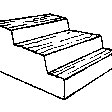
structural measures
- S5: Dams, pans, ponds
- S7: Water harvesting/ supply/ irrigation equipment
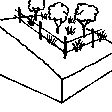
management measures
- M1: Change of land use type
- M6: Waste management (recycling, re-use or reduce)
3.7 Main types of land degradation addressed by the Technology
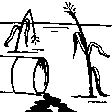
chemical soil deterioration
- Cn: fertility decline and reduced organic matter content (not caused by erosion)
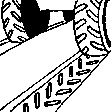
physical soil deterioration
- Pw: waterlogging
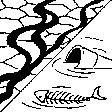
water degradation
- Ha: aridification
3.8 Prevention, reduction, or restoration of land degradation
Specify the goal of the Technology with regard to land degradation:
- reduce land degradation
- restore/ rehabilitate severely degraded land
Comments:
As the topsoil is of quite bad quality for the crop growing in the area. Thus, the land user has to buy soil from other areas and bring it into his soil for improving the soil fertility there.
4. Technical specifications, implementation activities, inputs, and costs
4.1 Technical drawing of the Technology
4.2 Technical specifications/ explanations of technical drawing
The integrated farming system is implemented on 8400 square meter of the land, including fruit trees such as 150 pomelo trees, 25 mango trees, 11 mango trees, and 10 lemon trees. Beside this, the farmer has four ponds for fish raising and irrigation, and 11 pigs which are putted separately in the cage of 42 square meter. The farmer grows the pomelo and lemon on row lines, the space between them is 5 m. Each pomelo and each lemon tree trunk is surrounded by the circular earth bund of 30 cm in height and at a diameter of 1m. They cover 240 square meters of the whole land area. The distance between the mango trees is 5 m and they surround the fishing ponds.
4.3 General information regarding the calculation of inputs and costs
Specify how costs and inputs were calculated:
- per Technology area
Indicate size and area unit:
0.84 ha
other/ national currency (specify):
KHR (Riel)
Indicate exchange rate from USD to local currency (if relevant): 1 USD =:
4000.0
Indicate average wage cost of hired labour per day:
20000 KHR
4.4 Establishment activities
| Activity | Type of measure | Timing | |
|---|---|---|---|
| 1. | Forest clearing | Vegetative | Dry season |
| 2. | Dig pond | Structural | Dry season |
| 3. | Land preparation and tube system | Agronomic | Dry season |
| 4. | Create circular earth bund around each fruit tree trunks and the soil mixed with organic fertilizer (pigs, cow dung, and chicken manure) | Agronomic | During September |
| 5. | buying seedling | Agronomic | During September |
| 6. | Growing fruit seedlings | Agronomic | During September |
| 7. | Building the pig house and tube system to flow the manure | Structural | Dry season |
| 8. | Buying pig | Management | Dry season |
| 9. | Buying pig fodder | Management | Dry season |
4.5 Costs and inputs needed for establishment
| Specify input | Unit | Quantity | Costs per Unit | Total costs per input | % of costs borne by land users | |
|---|---|---|---|---|---|---|
| Labour | Forest clearing and land preparation | person-day | 7.0 | 20000.0 | 140000.0 | 100.0 |
| Labour | Digging pond | person-day | 170.0 | 20000.0 | 3400000.0 | 100.0 |
| Labour | Tube system installation | person-day | 10.0 | 20000.0 | 200000.0 | 100.0 |
| Labour | Planting of fruit trees | person-day | 7.0 | 20000.0 | 140000.0 | 100.0 |
| Equipment | Pumping machine | Set | 3.0 | 1600000.0 | 4800000.0 | 100.0 |
| Equipment | Knife | Piece | 1.0 | 20000.0 | 20000.0 | 100.0 |
| Equipment | Ax | Piece | 1.0 | 25000.0 | 25000.0 | 100.0 |
| Equipment | Two handled basket | Pair | 1.0 | 14000.0 | 14000.0 | 100.0 |
| Equipment | Hoe | Piece | 1.0 | 20000.0 | 20000.0 | 100.0 |
| Equipment | Tube system | Package | 1.0 | 8000000.0 | 8000000.0 | 100.0 |
| Plant material | Pomelo tree | Tree | 30.0 | 60000.0 | 1800000.0 | 100.0 |
| Plant material | Mango tree | Tree | 25.0 | 6000.0 | 150000.0 | 100.0 |
| Plant material | Lemon | Tree | 10.0 | 15000.0 | 150000.0 | 100.0 |
| Plant material | Tamarind | Tree | 11.0 | 80000.0 | 880000.0 | 100.0 |
| Fertilizers and biocides | Cow dung and pig manure | Bag | 33.0 | 3000.0 | 99000.0 | 100.0 |
| Construction material | Pig house | Piece | 1.0 | 16000000.0 | 16000000.0 | 100.0 |
| Other | 3 mother pigs and 1 boar | Number | 4.0 | 1200000.0 | 4800000.0 | 100.0 |
| Total costs for establishment of the Technology | 40638000.0 | |||||
Comments:
There are four ponds surrounding the orchard. Three of them were excavated by external labour force. The farmer spent 200,000 Riel per hour while the digging required 17 hours in total equal to 3,400,000 Riel (in the cost table above, the indications of this item has been converted into person-day). Another one was dug by removing the land for farm preparation when the orchard was established in 1998. Although farmer cultivates 150 pomelo on his plot, he bought only 30 trees from outside, 120 trees he had already on his farm.
4.6 Maintenance/ recurrent activities
| Activity | Type of measure | Timing/ frequency | |
|---|---|---|---|
| 1. | Watering once per week, if hotter, 4 days per week | Agronomic | 32 weeks |
| 2. | Cow dug once per 6 month | Agronomic | Once per 6 months |
| 3. | Pesticide spraying | Agronomic | Presence of insects |
| 4. | Branches and leaves cutting | Agronomic | Clearing per year |
| 5. | Grass clearing | Agronomic | one week |
4.7 Costs and inputs needed for maintenance/ recurrent activities (per year)
| Specify input | Unit | Quantity | Costs per Unit | Total costs per input | % of costs borne by land users | |
|---|---|---|---|---|---|---|
| Labour | Maintaining labour | Person-day | 240.0 | 20000.0 | 4800000.0 | 100.0 |
| Plant material | Diesel | Liter | 315.0 | 3000.0 | 945000.0 | 100.0 |
| Fertilizers and biocides | Organic fertilizer (pigs, cow dung, and chicken manure) | Bag | 50.0 | 44000.0 | 2200000.0 | 100.0 |
| Total costs for maintenance of the Technology | 7945000.0 | |||||
4.8 Most important factors affecting the costs
Describe the most determinate factors affecting the costs:
The farmer spent a lot of money on building pig house which cost 16,000,000 Riel equal to 4000 USD, tube system cost 8,000,000 Riel equal to 2000 USD, pumping machine cost 4,800,000 Riel equal to 1200 USD. In addition, he also spent on digging pond which cost 3,4000,000 Riel equal to 850USD. These components of the technology affects the costs for the establishement very much.
5. Natural and human environment
5.1 Climate
Annual rainfall
- < 250 mm
- 251-500 mm
- 501-750 mm
- 751-1,000 mm
- 1,001-1,500 mm
- 1,501-2,000 mm
- 2,001-3,000 mm
- 3,001-4,000 mm
- > 4,000 mm
Specify average annual rainfall (if known), in mm:
1138.20
Specifications/ comments on rainfall:
In 2015, the annual rainfall was 1138.2 mm,
in 2014, the annual rainfall was 1696.5 mm,
In 2013, the annual rainfall was 1661.8 mm.
Indicate the name of the reference meteorological station considered:
Ministry of Water Resources and Meteorology (2015)
Agro-climatic zone
- sub-humid
5.2 Topography
Slopes on average:
- flat (0-2%)
- gentle (3-5%)
- moderate (6-10%)
- rolling (11-15%)
- hilly (16-30%)
- steep (31-60%)
- very steep (>60%)
Landforms:
- plateau/plains
- ridges
- mountain slopes
- hill slopes
- footslopes
- valley floors
Altitudinal zone:
- 0-100 m a.s.l.
- 101-500 m a.s.l.
- 501-1,000 m a.s.l.
- 1,001-1,500 m a.s.l.
- 1,501-2,000 m a.s.l.
- 2,001-2,500 m a.s.l.
- 2,501-3,000 m a.s.l.
- 3,001-4,000 m a.s.l.
- > 4,000 m a.s.l.
Indicate if the Technology is specifically applied in:
- not relevant
5.3 Soils
Soil depth on average:
- very shallow (0-20 cm)
- shallow (21-50 cm)
- moderately deep (51-80 cm)
- deep (81-120 cm)
- very deep (> 120 cm)
Soil texture (topsoil):
- coarse/ light (sandy)
Soil texture (> 20 cm below surface):
- medium (loamy, silty)
Topsoil organic matter:
- low (<1%)
5.4 Water availability and quality
Ground water table:
5-50 m
Availability of surface water:
good
Water quality (untreated):
for agricultural use only (irrigation)
Is water salinity a problem?
No
Is flooding of the area occurring?
Yes
Regularity:
episodically
Comments and further specifications on water quality and quantity:
It was not inundated over the last 3 years. The farmer uses four ponds for watering.
5.5 Biodiversity
Species diversity:
- medium
Habitat diversity:
- low
5.6 Characteristics of land users applying the Technology
Sedentary or nomadic:
- Sedentary
Market orientation of production system:
- commercial/ market
Off-farm income:
- > 50% of all income
Relative level of wealth:
- average
Individuals or groups:
- individual/ household
Level of mechanization:
- manual work
- mechanized/ motorized
Gender:
- men
Age of land users:
- middle-aged
Indicate other relevant characteristics of the land users:
The land user is 47 years old and his wife is a seller of grocery nearby district market.
5.7 Average area of land owned or leased by land users applying the Technology
- < 0.5 ha
- 0.5-1 ha
- 1-2 ha
- 2-5 ha
- 5-15 ha
- 15-50 ha
- 50-100 ha
- 100-500 ha
- 500-1,000 ha
- 1,000-10,000 ha
- > 10,000 ha
Is this considered small-, medium- or large-scale (referring to local context)?
- medium-scale
Comments:
Compared to the local context, he had the total area owned, including the land where no technology applied such as implementing technology area 0.84 hectares, land without any agriculture activities 3 hectares, paddy field 60 hectares, and crop land 0.05 hectares.
5.8 Land ownership, land use rights, and water use rights
Land ownership:
- individual, titled
Land use rights:
- individual
Water use rights:
- open access (unorganized)
5.9 Access to services and infrastructure
health:
- poor
- moderate
- good
education:
- poor
- moderate
- good
technical assistance:
- poor
- moderate
- good
employment (e.g. off-farm):
- poor
- moderate
- good
markets:
- poor
- moderate
- good
energy:
- poor
- moderate
- good
roads and transport:
- poor
- moderate
- good
drinking water and sanitation:
- poor
- moderate
- good
financial services:
- poor
- moderate
- good
6. Impacts and concluding statements
6.1 On-site impacts the Technology has shown
Socio-economic impacts
Production
crop production
Comments/ specify:
Although the farmer cultivated always on less fertile soil, by the Integrated Farming System he was able to optimize substantially the production (by large variety of different cultures on a limited space and products such as fruit trees, pigs, fish, more efficiency at cycling of nutrients and farm materials, etc ).
crop quality
Comments/ specify:
The pest control and the soil fertility by applying organic fertilizer have been improved slightly due to the fact that the farm ecosystem is better balanced now. In addition, he has enough ponds which ensure the water supply to the crops all year round. This may be reasons that he gets far better crop quality, now.
risk of production failure
Comments/ specify:
By the advantages of the mixed production system he was able to alleviate the farming risks caused by the exposure to climate change related uncertainties such as floods, change in rainfall pattern, drought, fluctuating market prices and diseases.
product diversity
Comments/ specify:
Compared with the past, where he didn’t implement IFS on his farm (mono-cropping), the product diversity now has been increased substantially and was reinforced by the good market demand during the last years.
land management
Comments/ specify:
Although the soil is difficult to grow fruit trees, he was able to improve the soil by using organic fertilizers (pigs, cow dung, and chicken manure). In consequence, the the land management was simplified
Water availability and quality
water availability for livestock
Comments/ specify:
After the digging fo the ponds, water for the livestock, the pigs and the chicken is available all year round.
irrigation water availability
Comments/ specify:
The farmer used the water from the new ponds for watering fruit trees.
Income and costs
expenses on agricultural inputs
Comments/ specify:
Spending more money on establishment activities (mainly the pig house, irrigation system and the ponds etc).
farm income
Comments/ specify:
Due to good market prices for his pomelo variety, the supplement fish production and the nearly close nutrient cycle on his farm that reduced the expenditure on chemical fertilizer the income increased constantly.
diversity of income sources
Comments/ specify:
Compared to the former mono-cropping system, the large variety of products produced on his farm since 1998 has diversified the income sources substantially through this technology.
workload
Comments/ specify:
Using pumping machine for irrigating the fruit trees.
Socio-cultural impacts
food security/ self-sufficiency
Comments/ specify:
The diversification of the production in very good quality providing good nutrition to human also enhanced the food security, as there are always farm products which can be sold on the market.
health situation
Comments/ specify:
No chemical fertilizer and less of pesticide is used now.
land use/ water rights
Comments/ specify:
Due to the ponds on own farm area, the water right security has been improved significantly. However, he was already in possession of land titles.
recreational opportunities
Comments/ specify:
As in paradise – that’s what it feels walking through the multi-purpose and inspiring farm area. The farmer enjoys farming under these conditions.”
community institutions
Comments/ specify:
By his success of practicing the technology of IFS, he was able to share his knowledge with local people on farm. In addition, he propagated (macrotting) pomelo tree plants and shared them with village people free of charge (one pomelo tree plant per family who was interested to plant this kind of crop).
national institutions
Comments/ specify:
Relevant stakeholders are interested in the integrated farming system.
SLM/ land degradation knowledge
Comments/ specify:
He understands now that it was necessary to add fertile soil from other places to the degraded land in regard to improve the crop growing. In addition, he learned how to avoid chemical fertilizer which could make the soil compact and finally in the future less fertile. Further, he learned by experience how to apply organic fertilizers that enhanced the land rehabilitation.
Comments/ specify:
The water quantity has not increased because the scare water in the dry season has to be considered and the high quantity of water during flood time can not be taken into account.
Ecological impacts
Water cycle/ runoff
harvesting/ collection of water
Comments/ specify:
There are 4 ponds for rainfall water harvesting to irrigat crop or animals raising during drought.
excess water drainage
Comments/ specify:
The larger amount of installed pipes improved substantially the excess water drainage.
evaporation
Comments/ specify:
The shadow from the fruit trees and the rice straw as soil cover reduced the evaporation.
Soil
soil moisture
Comments/ specify:
The soil moisture increased as he covers the soil by rice straw and fruit trees.
soil cover
Comments/ specify:
The high amount of fruit trees cover soil very well. In addition, rice straw is covering the soil arround the fruit tree trunks.
soil crusting/ sealing
Comments/ specify:
Due to the regular application of organic fertilizer and rice straw the soil crusting and sealing can be minimized.
soil organic matter/ below ground C
Comments/ specify:
The application of organic fertilizer (pigs, cow dung, and chicken manure) increased the soil organic matter.
Biodiversity: vegetation, animals
plant diversity
Comments/ specify:
Due to the higher variety of fruit trees.
pest/ disease control
Comments/ specify:
This integrated farming system avoids plant and fruit diseases and pests substantially due to favourable environmental conditions (better microclimate, better balancing of pests and beneficial organisms).
Climate and disaster risk reduction
drought impacts
Comments/ specify:
During drought situations, the farmer can use now water from ponds to irrigate the fruit trees.
6.2 Off-site impacts the Technology has shown
Comments/ specify:
Animal manure is impacted
6.3 Exposure and sensitivity of the Technology to gradual climate change and climate-related extremes/ disasters (as perceived by land users)
Gradual climate change
Gradual climate change
| Season | Type of climatic change/ extreme | How does the Technology cope with it? | |
|---|---|---|---|
| annual temperature | increase | moderately | |
| seasonal temperature | wet/ rainy season | increase | very well |
| seasonal temperature | dry season | decrease | moderately |
| seasonal rainfall | wet/ rainy season | increase | well |
| seasonal rainfall | dry season | increase | not well at all |
Climate-related extremes (disasters)
Meteorological disasters
| How does the Technology cope with it? | |
|---|---|
| tropical storm | moderately |
| extra-tropical cyclone | well |
Climatological disasters
| How does the Technology cope with it? | |
|---|---|
| heatwave | moderately |
| drought | moderately |
Hydrological disasters
| How does the Technology cope with it? | |
|---|---|
| general (river) flood | moderately |
6.4 Cost-benefit analysis
How do the benefits compare with the establishment costs (from land users’ perspective)?
Short-term returns:
negative
Long-term returns:
very positive
How do the benefits compare with the maintenance/ recurrent costs (from land users' perspective)?
Short-term returns:
negative
Long-term returns:
very positive
6.5 Adoption of the Technology
- single cases/ experimental
Of all those who have adopted the Technology, how many have did so spontaneously, i.e. without receiving any material incentives/ payments?
- 90-100%
6.6 Adaptation
Has the Technology been modified recently to adapt to changing conditions?
Yes
If yes, indicate to which changing conditions it was adapted:
- climatic change/ extremes
6.7 Strengths/ advantages/ opportunities of the Technology
| Strengths/ advantages/ opportunities in the land user’s view |
|---|
| High market price for the products. |
| He spends almost all his free time to work in the farm to relax and enjoy farming. |
| More income for the land user's family. |
| Strengths/ advantages/ opportunities in the compiler’s or other key resource person’s view |
|---|
| The soil’s quality is improved due to integrated farming and the use of organic fertilizer. |
| The crops are long-lasting and can continue to be harvested annually. |
| Labor and time are saved by using an irrigation system. |
6.8 Weaknesses/ disadvantages/ risks of the Technology and ways of overcoming them
| Weaknesses/ disadvantages/ risks in the land user’s view | How can they be overcome? |
|---|---|
| The high expense on digging the ponds. | Taking time and money before practicing the technique. |
| Pomelo could not be able to grow in the wet soil. | Change crop varieties. |
| During the drought period, the technology practice has an increase in the number of insects, and they sometime could not be able to control like happening in 2015. | Use pesticide to kill the insects. |
| The soil within the farm is difficult to convert from less fertile soil to fertile soil, and take many years to be ready for cropping. It is called Prateah Lang soil. | Change the type of soil for cropping by using a mixture of animal manure and mountain soil. |
| Weaknesses/ disadvantages/ risks in the compiler’s or other key resource person’s view | How can they be overcome? |
|---|---|
| Need to invest more capital. | This should be done step by step. |
| Less fertile soil | Soil conversion by mixing animal manure and fertile soil and spreading this on the area’s crop land. |
7. References and links
7.1 Methods/ sources of information
- field visits, field surveys
1 specific place
- interviews with land users
1 person
- interviews with SLM specialists/ experts
3 persons
7.2 References to available publications
Title, author, year, ISBN:
Seng, V. (2010). Agricultural Best Practices for Sustainable Land Management in Cambodia. Phnom Penh: Cambodian Agricultural Research and Development Institute.
Available from where? Costs?
CARDI
Links and modules
Expand all Collapse allLinks
No links
Modules
No modules


